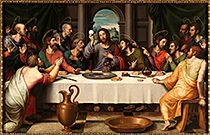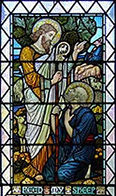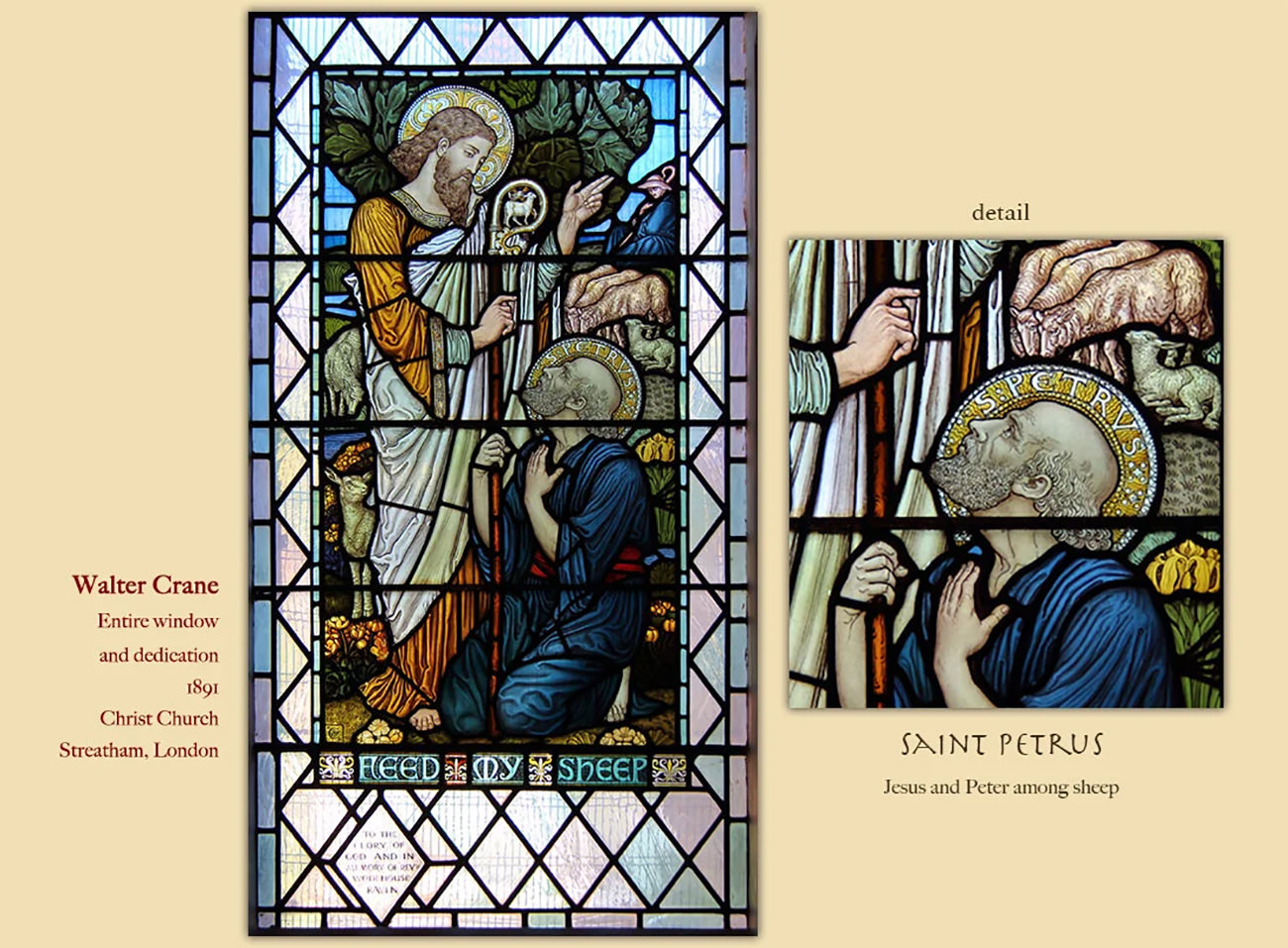
by Warren Camp
2 Peter 1:1–2 . . . Introduction
“Written When and Where, to Whom and Why?”
When? Although no explicit date for when the letters were written, the epistles of 1st and 2nd Peter were likely written between AD 60 and 68. The contents of the first epistle, reflecting impending persecutions, suggest a date shortly before Peter’s death. For his second epistle, Christian historian, Eusebius, places Peter’s martyrdom in Rome during the period of Nero’s persecution (AD 64–68). Therefore, it’s likely that 2nd Peter was written between AD 65 and 68. Because he’d become aware of the fact that he was soon going to die, this second letter acts as his farewell speech.

There’s a lot to learn about
Peter’ second epistle.
Where? The tradition regarding Peter’s residence and death at Rome is very strong. Regarding where he might have written his letters, some historians believe that it was written in Babylon (literally, 1 Pet. 5:13 NLT,) yet some say that Babylon figuratively represents Rome, since Rome was then the capital of the world, as Babylon had been in the past. There’s no scriptural evidence documenting from where he wrote his first letter. The second letter is assumed by several commentators to have been written in Rome, where Peter was subsequently imprisoned and thereafter slain under Nero’s orders. Irrespective of its actual place of origin, the second epistle is the work of a man under sentence, writing to a suffering church that he was unable to physically visit. It’s not known why he’d been relocated to Rome where he became a martyr. Indeed, much about the last days of this apostle involves great uncertainty.
To Whom? The recipients of 1 Peter lived in five provinces in the northern, central, and western parts of Asia Minor (modern Turkey): Pontus, Galatia, Cappadocia, Asia, and Bithynia. Whether they’d been Jews or non-Jewish Gentiles, the recipients of his first epistle had been suffering various trials and afflictions (John 1:6 NIV); the possibility of greater and more severe difficulties was very real (1 Pet. 3:13–22; 4:12–19). The exact nature of these problems isn’t known, although there are similarities to those persecutions endured by early Christians, as described in Acts and in some of Paul’s epistles. The destination and recipients of his second epistle must have been the same network of churches as those of the first, according to what he’d written in 2 Pet. 3:1. Both epistles were addressed to persons who resided in Asia Minor; in both they’re regarded as living in the midst of trials.
Why? The basic theme of 1 Peter is “the living hope in the midst of suffering.” Second Peter is a personal message from the aged apostle who was about to finish his career. It’s an intense, passionate farewell speech, addressed to the same churches as First Peter. But in his second letter, Peter challenges Jesus’ followers to continue growing in their faith, love, and service to God. Chapter one focuses on the truth of God’s word, followed by dire warnings; chapter 2 tells readers to not follow false prophets and false teachers who were beginning to infiltrate the churches; chapter 3 begins with, “I have written both of [these letters] as reminders to stimulate you to wholesome thinking” (2 Pet. 3:1), thereby warning young church bodies under his charge about his own approaching death, while highlighting the imminence of Christ’s return. In the face of these eventualities, he exhorted Christians to not become corrupted by heretical teachings, which is the chief concern of his second epistle. He strongly stressed the authenticity of God’s word and the sure return of Lord Jesus.
Peter begins this second letter by offering his readers a final challenge, encouraging Jesus’ followers to be people who never stop growing. Persecution from Roman authorities, which was the major issue in Peter’s first letter (as detailed in Warren’s introductory commentary), wasn’t the only problem these people faced: False teachers had arisen and were teaching heresy, specifically Gnosticism. The fact that Jesus hadn’t yet returned was being interpreted as evidence that the apostles (e.g., Peter and Paul) shouldn’t be trusted. False teachers were apparently insinuating that the Second Coming was something of a “moral club” invented by the apostles to inhibit the Christian’s “freedom.” For these misdirected guides, “freedom” meant they had an absolute right to indulge in sexual immorality, drunkenness, and hedonistic pleasure (2:2, 10, 13–14, 18).
To those self-imposed assumptions, Peter fights back in this second letter by bellowing a convincing “No way!” He’ll assert that apostolic teaching wasn’t a matter of spinning one’s own ideas (1:16, 20) but that, in reality, the false teachers’ so-called “authority” stemmed from their own minds (1:21). As a result, their “spiritual freedom” would inevitably lead to depravity (2:19).
These weren’t simply false teachers, but were apostates; that is, they’d known the truth of Christianity, claimed to have kept hold of it through faith, then turned from it, completely denying the truth they once knew. Peter, therefore, warns his Christian readers about following these wolves in sheep’s clothing.
To better understand Peter’s purpose for writing this second letter, it’s important to realize that, in his first letter, Peter fed Christ’s sheep (click to enlarge the photo of Peter feeding Jesus’ sheep) by instructing them how to deal with persecution from outside the church (1 Pet. 4:12). But in this second letter, he teaches them how to deal with false teachers and evildoers inside the church (see 2:1; 3:3–4). In both letters, Peter, a veritable pastor (“shepherd”) of Christ’s sheep, seeks to recommend to his readers a wholesome combination of Christian faith and practice. More specifically, his purpose is threefold: (1) to stimulate Christian growth [chpt.1]; (2) to combat false teaching [chpt. 2]; and to encourage watchfulness in view of the Lord’s certain return [chpt. 3].
Comparing 1st and 2nd Peter Note the contrasts between 1st and 2nd Peter. First Peter: (1) It’s key word is “suffering”; (2) it’s filled with rejoicing hope when suffering; (3) it deals with how to detect unjust suffering; (4) it’s a letter of consolation; (5) it was meant to comfort the hearer. Second Peter: (1) It’s key word is “knowledge”; (2) it deals with how to be true in the face of falsehood; (3) it suggests how to detect untruthful error; (4) it’s a letter of warning; (5) and it was meant to disturb and get the attention of the reader.
To Whom Simon Peter Addressed This Letter (1:1)
Peter the author identifies himself as “Simon Peter.” He addresses his readers with his recognized full Christian name: Simon was his Aramaic name and Peter his Greek name; both words mean “rock.” Later in chapter 1, we’ll see him use the first person singular pronoun — “I” — in a highly personal passage (1:12–15), claiming to be an eyewitness of Jesus’ transfiguration (1:16–18)
1 1Simon Peter, a servant and apostle of Jesus Christ,
To those who through the righteousness of our God and Savior Jesus Christ have received a faith as precious as ours: . . . (2 Pet. 1:1 NIV).
From the start, Peter acknowledges his place in the body of Christ. He immediately states that he’s an apostle, which was a high and exalted position; he needed to demonstrate authority behind his upcoming rebukes and exhortations. Yet, he humbly identifies with his readers by calling himself a servant or bond-slave of Christ. No matter what Peter’s position was, he was ultimately a servant.
To whom he addressed this letter (v. 1b), Peter is saying that this Christian audience had received a similar precious faith from the Lord that the apostles had received when they became saved. Realize the importance of this text: “have received a faith as precious as ours.” Christians today have been saved the same way the twelve first-century apostles had been saved — They received no more salvation or privilege than we’ve received today.
And, when Peter wrote, “through the righteousness of our God and Savior Jesus Christ,” he probably meant that a “saving faith” was given only by the righteous act of God (unlike the way man distinguishes who ought to receive free grace). God gives saving faith to whom he pleases, not just to the rich, the wealthy, the educated, the privileged, or “the intelligentsia,” as the Gnostics believed. The Lord doesn’t give faith to one class of individuals and not another, the way the Gnostics dogmatically maintained. Whenever God dispenses saving faith to men, he does so with complete justice and fairness.
Likely, Peter’s “through the righteousness of our God and Savior Jesus Christ” refers to Christ’s atoning work; Peter views Jesus as being both God and Savior. As a result of his death, Jesus not only forgives every sin of every believing sinner, he also purchased for all sinners absolute righteousness, which includes saving faith. Such truth was taught by Peter in his first epistle: “Through him you believe in God, who raised him from the dead and glorified him, and so your faith and hope are in God” (1 Pet. 1:21).
Peter’s Short but Encouraging Prayer (1:2)
In v. 1, Peter explained to these Christians how they had received saving faith from God’s gracious hand, but in this verse he prays that they might experience sanctifying grace, growing spiritually and maturing in their Christian walks. Sanctifying grace means one is to change as he is confronted with the truth of Scripture.
2Grace and peace be yours in abundance through the knowledge of God and of Jesus our Lord (2 Pet. 1:2).
Peter begins by praying for sanctifying peace in the lives of his Christian friends, keeping them from becoming dissatisfied. Such dissatisfaction would bring them close to all kinds of false teachings that promise new, exciting, super-exhilarating experiences that, in the end, bring slavery, drudgery, and despair. Peter prays that grace and peace will not only be given them but that both gifts will also be multiplied, since God is interested in completely changing people’s lives, not simply their intellectual pursuits of Christianity.
As Apostle Peter saw the day of his own death drawing near, he warned believers in Jesus of several false teachers. In the next few verses of our follow-up study, Peter will present the following: the inference that we should regard anyone who claims to be a “prophet” as a false prophet, since they attempt to turn men and women away from the truth about Jesus and their faith in him; we should expect false teachers who aren’t always readily apparent, to arise, and that they’ll come from within the church as well as from without; the teaching of these false teachers is destructive to the teachers and to all who follow their teaching and practice; false teachers can be identified by their morals, their motives, their methods, and their message.
In or next study, we'll pick up this discussion that highlights the importance of believers maintaining their faith, hope, grace, and peace while realizing and resisting the evil ways promoted by false teachers of the day, Peter’s day and ours.
- Q. 1 How do false teachers arise?
- Q. 2 Is your faith in God precious (v. 1)? What do you do to protect that faith?
- Q. 3 How abundant is the grace and peace you’ve received from above? How secure are they?

‘The Last Supper’ painting
Click to open “Peter Masterpieces.”
Summary Video: “Second Peter”
† Watch this overview video of Second Peter created by BibleProject.
Warren’s New “Peter Masterpieces” Photo Album
† View several classic paintings of Saint Peter by art world masters: Rembrandt, Michelangelo, Da Vinci, Rubens, Goya, El Greco, Raphael, Masaccio, Giotto, Correggio, Tintoretto, Caravaggio, Veneziano, Tissot, Duccio, Fra Angelico, Galle, Duccio, Dürer, Palomino, and many more.
2 Peter 1:1–2
New International Version (NIV) or view it in a different version by clicking here.
— Listen to chapter 1, narrated by Max McLean.


